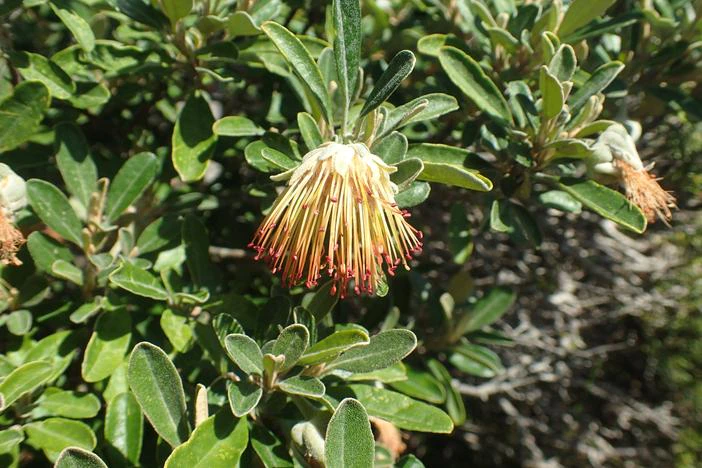Dampier’s Rose
(Diplolaena dampieri)
Dampier’s Rose (Diplolaena dampieri)
/
/

Geoff Derrin
CC BY-SA 4.0
Image By:
Geoff Derrin
Recorded By:
Copyright:
CC BY-SA 4.0
Copyright Notice:
Photo by: Geoff Derrin | License Type: CC BY-SA 4.0 | License URL: https://creativecommons.org/licenses/by-sa/4.0 | Uploader: Gderrin | Publisher: Wikipedia Commons






























Estimated Native Range
Climate Requirements for Aachen, Germany
| This Plant | Your Site | Plant Suitability for Your Location | ||
|---|---|---|---|---|
| • Precipitation | 8" - 64" | 34" | You should be able to grow this plant with no additional irrigation. | Excellent |
| • High Temp. | 52°F - 101°F | 72°F | Your summer temperatures are normal for this plant. | Excellent |
| • Low Temp. | 42°F - 56°F | Unknown°F | Your winter temperatures may be too cold for this plant | Too cold |
This plant may not grow well at your location - your winters are too cold.
Summary
Diplolaena dampieri, commonly known as Dampier’s Rose, is a perennial shrub native to the coastal sand dunes and limestone cliffs of Western Australia. It typically grows to a height of 1.5 meters (4 feet 11 inches) with a spreading, rounded habit. The leaves are elliptic to oblong-elliptic, slightly leathery, and aromatic. Diplolaena dampieri produces pendulous flowers at the ends of branches, with petals ranging from orange to pale red, about 5 mm (0.20 in) long, and edged with small hairs. The flowers, which appear from July to September, are not particularly showy but are interesting due to their unique bract arrangement and hairiness.
Dampier’s Rose is valued for its drought tolerance and ability to thrive in coastal conditions, making it suitable for seaside gardens, xeriscaping, and as a low-maintenance ornamental shrub in warm climates. It is often used in native plant gardens and revegetation projects. This shrub prefers full sun to part shade and can tolerate a range of soil types, provided they have good drainage. While generally pest and disease-free, it can be susceptible to root rot in poorly drained soils.CC BY-SA 4.0
Dampier’s Rose is valued for its drought tolerance and ability to thrive in coastal conditions, making it suitable for seaside gardens, xeriscaping, and as a low-maintenance ornamental shrub in warm climates. It is often used in native plant gardens and revegetation projects. This shrub prefers full sun to part shade and can tolerate a range of soil types, provided they have good drainage. While generally pest and disease-free, it can be susceptible to root rot in poorly drained soils.CC BY-SA 4.0
Plant Description
- Plant Type: Shrub
- Height: 3-5 feet
- Width: 3-5 feet
- Growth Rate: Moderate
- Flower Color: Orange
- Flowering Season: Summer, Fall
- Leaf Retention: Evergreen
Growth Requirements
- Sun: Full Sun, Part Shade
- Water: Low, Medium
- Drainage: Medium
Common Uses
Bee Garden, Low Maintenance
Natural Habitat
Native to coastal sand dunes and limestone cliffs of Western Australia
Other Names
Common Names:
Scientific Names: Diplolaena dampieri, Diplolaena salicifolia var. cuneata
GBIF Accepted Name: Diplolaena dampieri Desf.